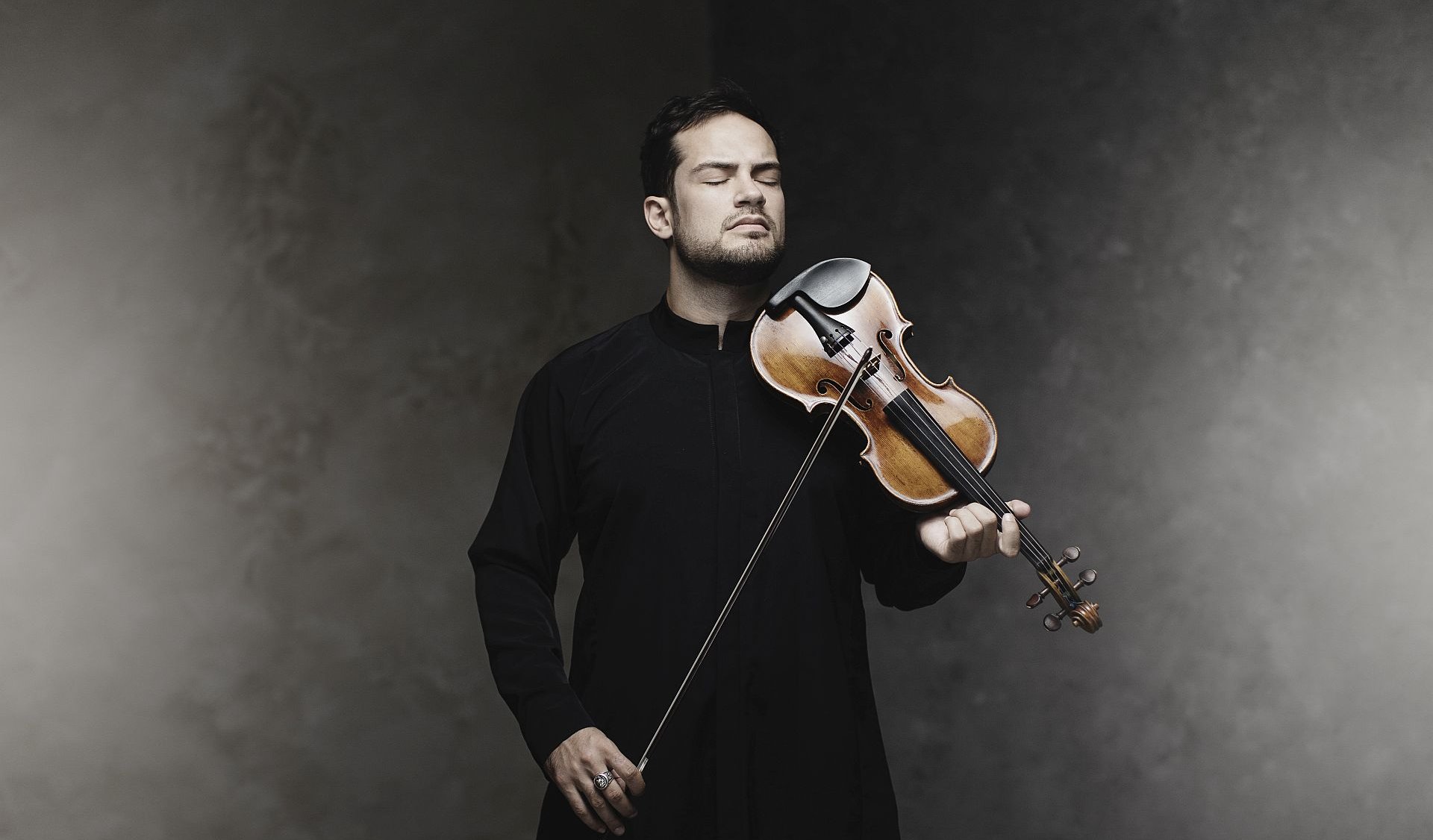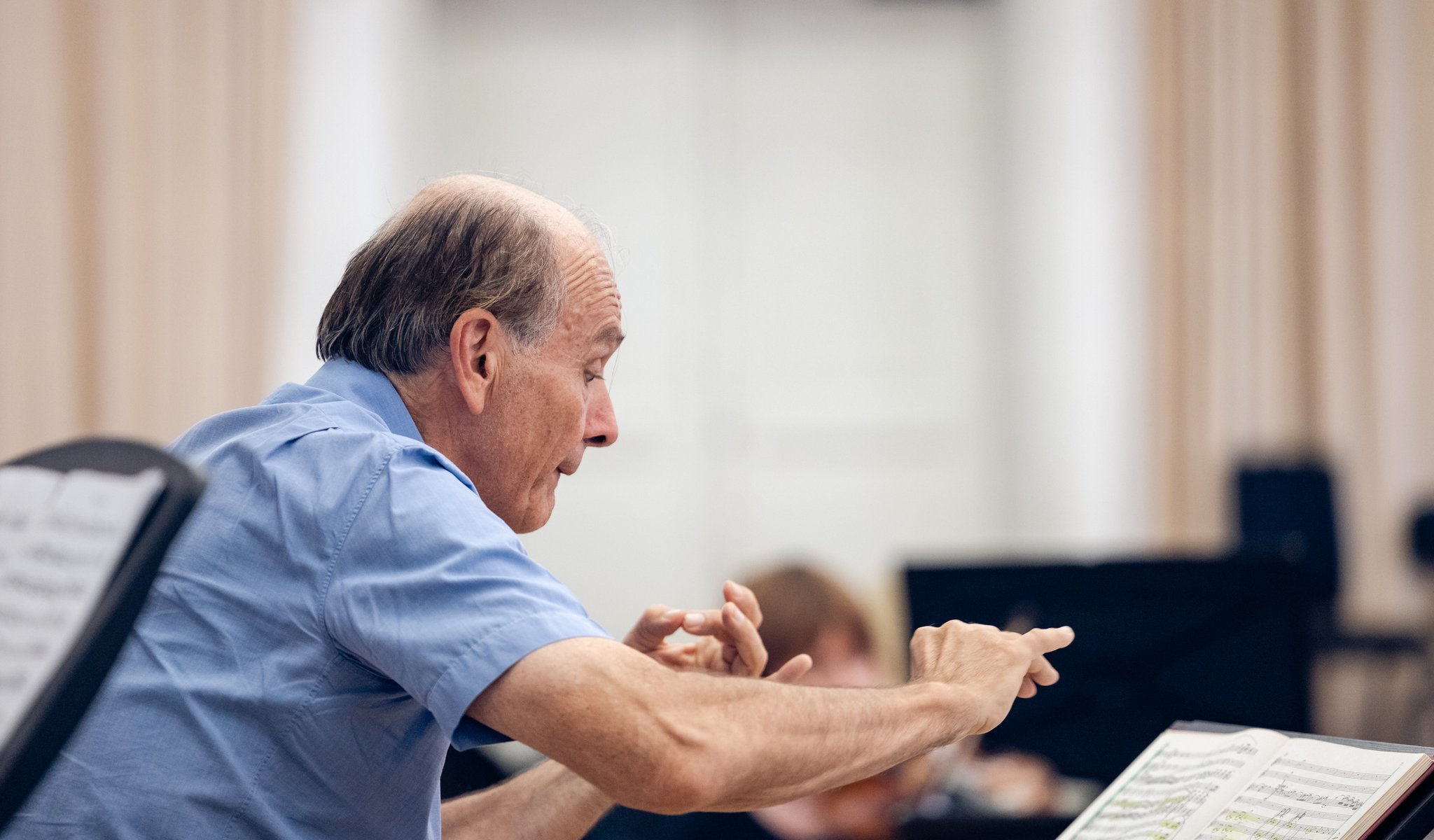

Program
Featuring
Other information
The event is about 2.5 hours long.
About the event
“There is an incredible amount of positive energy and vitality in both of them,” says Takács-Nagy, who has been drawn to the two composers since his childhood. The great conductor sees the two composers as spiritual medicine, and his series has been healing and curing at BFO concerts for years. This time, he conducts the Haydn Symphony, a favorite of Queen Marie Antoinette of France, followed by Mozart’s most popular violin concerto, and a serenade so long it extends to a whole concert section. The latter includes a later symphony and a violin concerto. The soloist of the program is the Belgian violinist Marc Bouchkov, who has Russian-Ukrainian ancestry and whose instrument strives to show its closeness to the human voice. “Undoubtedly: an exceptional talent”, wrote the critic of the Neue Zürcher Zeitung.
Although he was in the service of the Esterházy court, Haydn was also well known abroad in the 1780s. In 1784, Count d’Ogny commissioned six symphonies from the composer for a private orchestra of a Masonic lodge in Paris, which was being formed at the time. The Paris symphonies delighted French audiences at several points and were an immediate success. The Symphony in B-flat begins with a slow introduction in a dotted rhythm reminiscent of a French overture. The rest of the first movement is based on a single motif. The variation slow movement is based on the melody of a contemporary French ballad. A minuet spiced up with a few frills follows, and then a rondo finale concludes the work.
For a long time, it was thought that Mozart had composed all five of his violin concertos in 1775. Today, it seems certain that the first two were written a few years earlier, which explains why No. 3 is so much more mature and refined than the ones before it. The piece, intimate in tone, includes several operatic elements: among them is the first movement, the opening melody of which Mozart borrowed from the aria of an opera of his own, The Shepherd King, completed not much earlier. The orchestra interrupts the solo by the violin several times; thereby, shaping the atmosphere of the piece. This is the only movement of Mozart’s violin concertos where another instrument is given the opportunity to play an important solo. In fact, the oboes play a key role in the last several bars of the finale of the piece. The middle part of the work is serenade music, colored by tragic episodes. The conclusion, referred to as the Strasbourg Dance, is minuet-like.
Between 1774 and 1778, Mozart did not write a single symphony but wrote five serenades instead. The work in D major, completed in August 1775, was probably intended for the graduation ceremony of the University of Salzburg. The solo violin plays an important role in the three movements of the seven-movement serenade. Two were later transposed by the composer into a violin concerto, and the remaining four movements were made into a symphony. The piece contains two minuets, lacks the really slow movements, and ends with a finale that was unusual at the time. The movement alternates 2/4 and 3/8 sections, keeping the listener’s ear constantly alert.
Did you know? Haydn’s symphony was composed around 1785; Mozart’s violin concerto and serenade were both composed around 1775; the Festival Orchestra most recently performed the violin concerto in Pécs on December 18, 2013 (soloist and conductor: Leonidas Kavakos); this will be the first performance by the BFO of the other two pieces.
Contemporary events: the German poet Friedrich Schiller wrote his poem The Ode to Joy in 1785 / the English painter Thomas Gainsborough painted his picture Mr and Mrs William Hallett (”The Morning Walk”) in 1785 / The 120 Days of Sodom, the unfinished novel by Marquis de Sade, was written in 1785 (but published only in 1904) / the first edition of the English newspaper The Times hit the stands on January 1, 1785 (published as The Daily Universal Register during the first three years) / the Bánffy Castle, a prominent work of Baroque architecture in Transylvania, was built in 1775 in Kolozsvár / the Battle of Lexington set off the American War of Independence in 1775 / on January 20, 1775 the second version of the Czech composer Josef Mysliveček’s opera Demofoonte premiered in Naples / the English explorer James Cook completed his second three-year journey in 1775, during which he proved that the unknown “Terra Australis” was only a myth